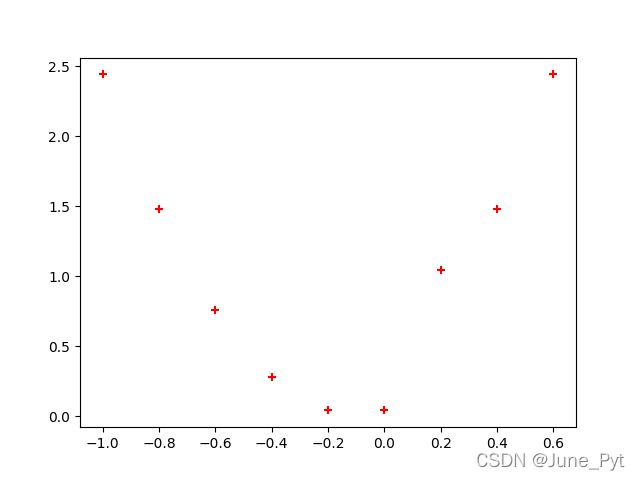Python日记(1)——求dy/dx
每天做一个Python小练习,顺便记录一些小技巧。
今天计算数值的时候,一直没搞懂怎么算一组x,y的变化率。于是做了一个求导数的方程。代码如下:
import numpy as np
x0 = np.arange(-1, 1, 0.2)
y0 = [-1.0000, -0.5120, -0.2160, -0.0640, -0.0080, 0, 0.0080, 0.2160, 0.5120, 1.0000]
for i in range(0, len(x0)):
if i+1 == len(x0):
break
else:
dx = round(round(x0[i + 1], 2) - round(x0[i], 2), 2)
dy = round(round(y0[i+1], 4) - round(y0[i], 4), 4)
d = round(dy / dx, 4)
print(d)
因为python自带的range不支持步长值为浮点数,所以这里引用了numpy的arange,这也是今天刚学的小技巧。还有一点,python的浮点数计算不是很精确,所以这里引用了大量函数round()。
输出结果大概如下:
2.44
1.48
0.76
0.28
0.04
0.04
1.04
1.48
2.44
为了方便以后调用,便做成了函数,代码如下:
import numpy as np
def df(xs, ys):
for i in range(0, len(xs)):
if i+1 == len(xs):
break
else:
dx = round(round(xs[i + 1], 2) - round(xs[i], 2), 2)
dy = round(round(ys[i+1], 4) - round(ys[i], 4), 4)
d = round(dy / dx, 4)
print(d)
if __name__ == '__main__':
x0 = np.arange(-1, 1, 0.2)
y0 = [-1.0000, -0.5120, -0.2160, -0.0640, -0.0080, 0, 0.0080, 0.2160, 0.5120, 1.0000]
df(x0, y0)
最后加上matplotlib画的散点图:
import numpy as np
from matplotlib import pyplot as plt
def df(xs, ys):
d = list()
for i in range(0, len(xs)):
if i+1 == len(xs):
break
else:
dx = round(round(xs[i + 1], 2) - round(xs[i], 2), 2)
dy = round(round(ys[i+1], 4) - round(ys[i], 4), 4)
dydx = round(dy / dx, 4)
d.append(dydx)
return d
if __name__ == '__main__':
x0 = np.arange(-1, 1, 0.2)
y0 = [-1.0000, -0.5120, -0.2160, -0.0640, -0.0080, 0, 0.0080, 0.2160, 0.5120, 1.0000]
plt.scatter(x0[:-1], df(x0, y0), color='red', marker='+')
plt.show()
